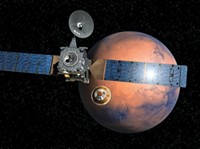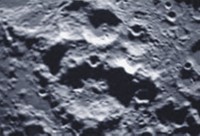Advertisement
Grab your lab coat. Let's get started
Welcome!
Welcome!
Create an account below to get 6 C&EN articles per month, receive newsletters and more - all free.
It seems this is your first time logging in online. Please enter the following information to continue.
As an ACS member you automatically get access to this site. All we need is few more details to create your reading experience.
Not you? Sign in with a different account.
Not you? Sign in with a different account.
ERROR 1
ERROR 1
ERROR 2
ERROR 2
ERROR 2
ERROR 2
ERROR 2
Password and Confirm password must match.
If you have an ACS member number, please enter it here so we can link this account to your membership. (optional)
ERROR 2
ACS values your privacy. By submitting your information, you are gaining access to C&EN and subscribing to our weekly newsletter. We use the information you provide to make your reading experience better, and we will never sell your data to third party members.
Physical Chemistry
Comet Lander Philae Wakes Up
After seven months of silence, the probe again begins communicating with scientific team on Earth
by Elizabeth K. Wilson
June 15, 2015

It’s been seven silent months, but the European Space Agency’s (ESA’s) little comet lander Philae has emerged from its unanticipated slumber, and once again contacted scientists on Earth.
The ESA’s Rosetta spacecraft, which is orbiting the comet 67P/Churyumov-Gerasimenko dispatched the dishwasher-sized Philae to the comet’s surface back in November 2014.
Philae’s landing was bumpy, however, and the craft bounced into a shadowed crater. Without sunlight to power its batteries, the lander was active for only 60 hours. The comet now is traveling nearer to the sun, so scientists had hoped Philae’s solar cells might charge up. The team switched on listening capabilities on March 12.
On Sunday, June 14, scientists at the European Space Operations Centre in Darmstadt, Germany finally received what they’d waited for: an 85-second-long data stream from Philae.
ESA issued a statement about Philae’s revival, explaining that the lander is doing well and has 24 W available in its batteries. “The lander is ready for operations,” Philae Project Manager Stephan Ulamec said in the statement.
ESA even had the lander issue its first tweet since going inactive:
Hello Earth! Can you hear me? #WakeUpPhilae
— Philae Lander (@Philae2014) June 14, 2015Since then, scientists and lay fans around the world have sent Philae an avalanche of affectionate, congratulatory messages on Twitter.
Monica Grady, a Rosetta mission team member and planetary sciences professor at the Open University, in England, tweeted that she hugged her taxi driver when she heard the news:
Been on the train. Heard whilst I was in taxi. Hugged the taxi driver @ESA_Rosetta @Philae_Ptolemy @OpenUniversity @OUstudents
— Monica Grady (@MonicaGrady) June 14, 2015The craft’s awakening should allow scientists to finally pinpoint its location on the comet’s surface. Before it went silent, Philae sent back tantalizing images of dark, high walls, but the information still wasn’t definitive enough.
Advertisement
Philae has apparently been collecting data for the past few days, even though it hadn’t yet been able to communicate with Earth, according to the Rosetta mission team. The team is now awaiting further data streams from Philae.
Now that Philae has been reanimated, the Rosetta team hopes the lander will drill into the comet’s surface and analyze its chemical composition.





Join the conversation
Contact the reporter
Submit a Letter to the Editor for publication
Engage with us on Twitter